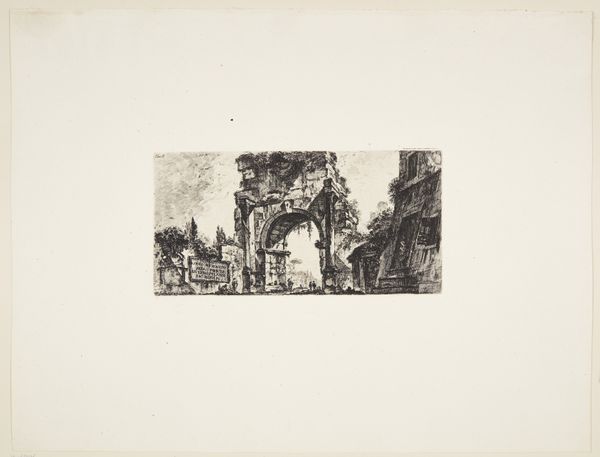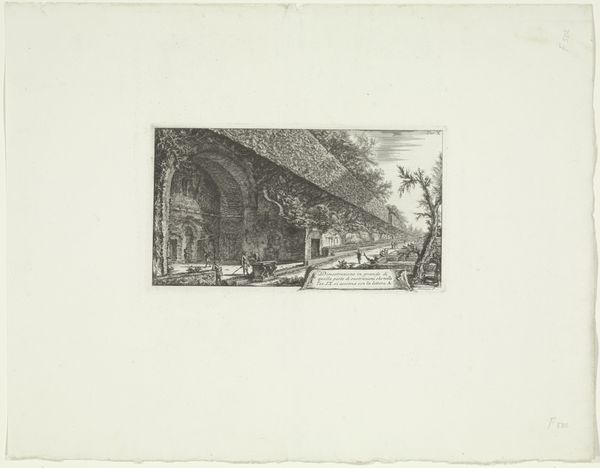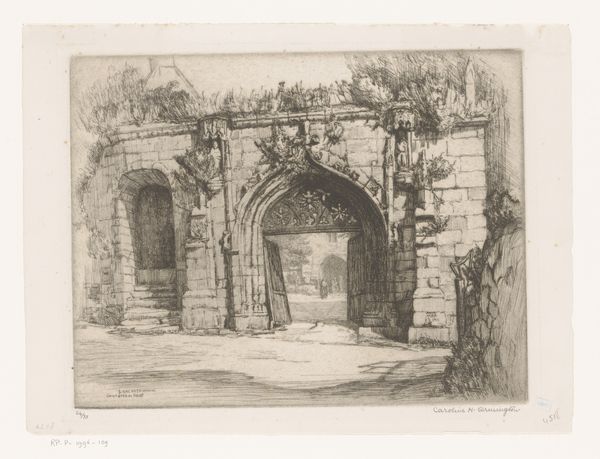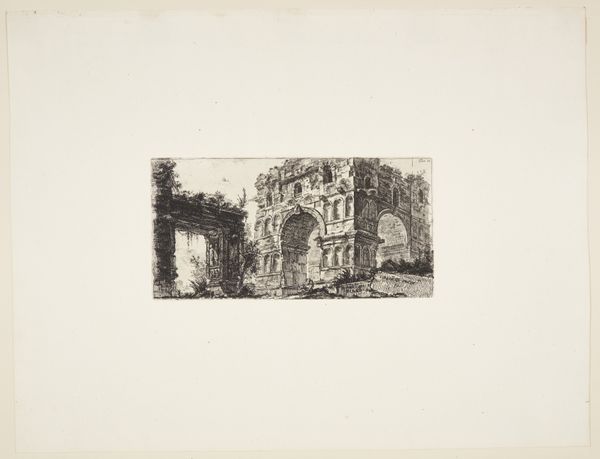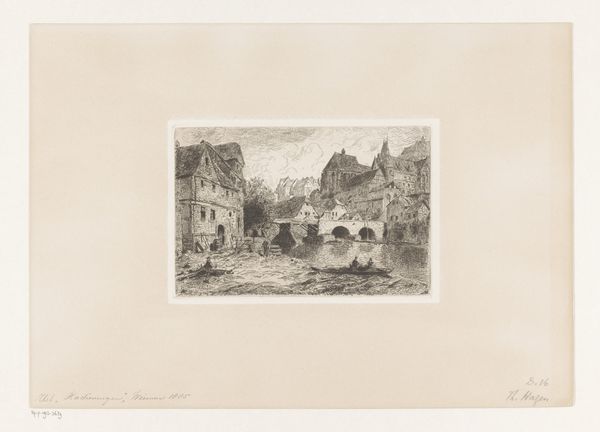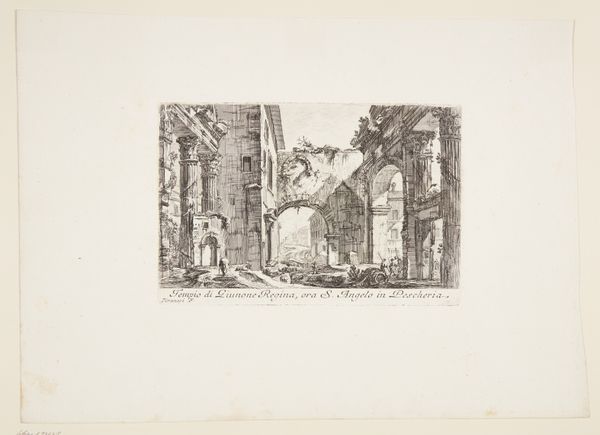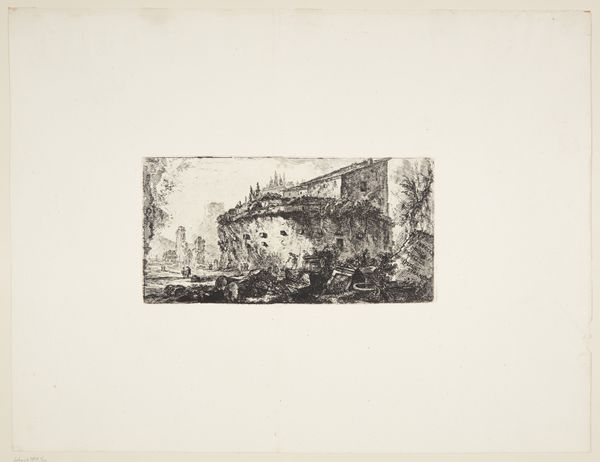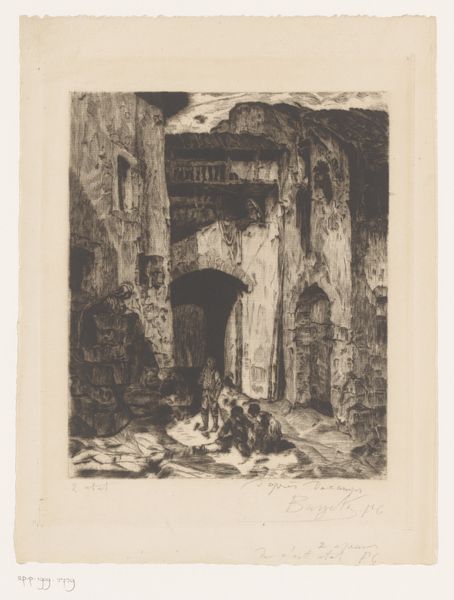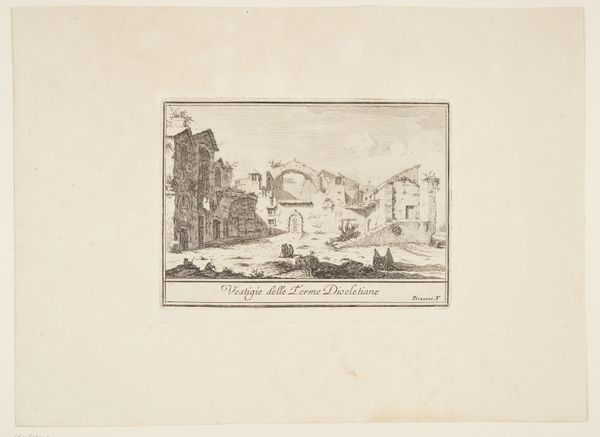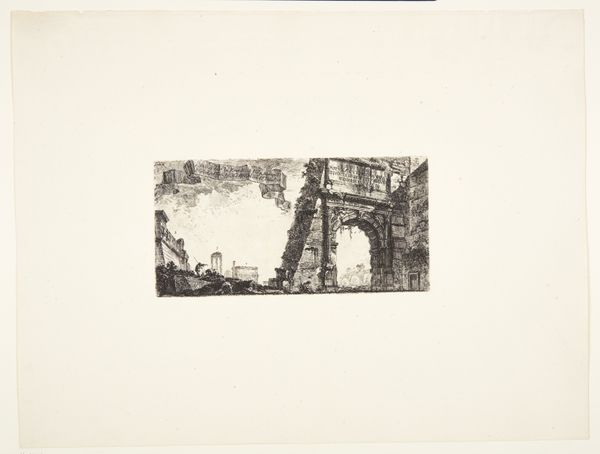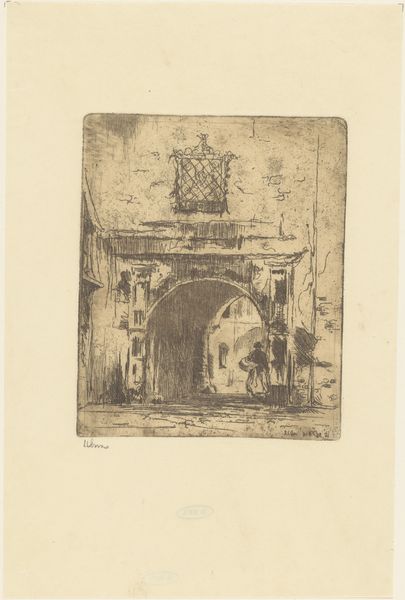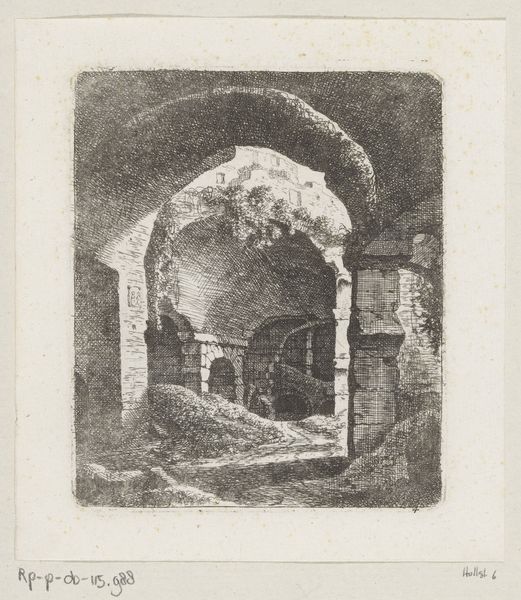
print, engraving
#
aged paper
#
toned paper
#
light pencil work
# print
#
landscape
#
romanesque
#
cityscape
#
italian-renaissance
#
engraving
Dimensions: 593 mm (height) x 445 mm (width) (bladmaal), 235 mm (height) x 352 mm (width) (plademaal)
Curator: This engraving, Porta S. Lorenzo by Giovanni Battista Piranesi, dating back to 1761, offers a captivating view of a Roman cityscape. What strikes you first? Editor: Its monumentality, definitely. The stark contrast between light and shadow emphasizes the sheer size and decaying grandeur of that archway, overshadowing the tiny figures passing by. It speaks to both power and vulnerability, don’t you think? Curator: Absolutely. Piranesi was deeply engaged in the politics of imagery. Notice how he positions the gate not just as an architectural marvel, but as a fragment deeply embedded within the evolving fabric of Roman life. It’s more than just stones; it's infrastructure repurposed, lived in, and marked by time. Editor: Yes, and those ordinary figures become incredibly significant within that context. We have to consider the gate's role not just in facilitating movement and commerce, but as a symbolic barrier, delineating boundaries of class, power, and gender within the city. How does that impact how we interpret the grand structures versus these marginalized individuals? Curator: Precisely. The contrast is key to unpacking how such a structure may be perceived at the time and contemporarily, as an object of immense admiration on one hand and a symbol of potential oppression or exclusion on the other hand. Piranesi uses linear precision of engraving to reveal texture and human activity around classical ruins. The technique is both a celebration and critique. Editor: I appreciate how he implicates us in that conversation by carefully controlling our perspective. It is not a neutral, objective record, and we have to wrestle with his agenda. It’s easy to get swept up by its beauty, but we need to engage actively. Curator: I agree completely. Piranesi forces us to question whose stories are prioritized in the grand narrative of Rome and how its history impacts the social complexities we encounter in public space every day. Editor: This piece encourages one to challenge romantic visions of power and really think about how that power translates in daily existence. Curator: Indeed, an invitation to engage with how Rome’s historical narrative impacts and molds our perspectives.
Comments
No comments
Be the first to comment and join the conversation on the ultimate creative platform.
